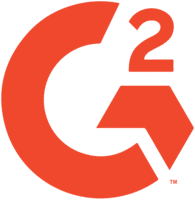In the fast-paced and ever-evolving landscape of human resources, recruiters play a pivotal role in shaping the workforce of organizations. As the demands on HR professionals continue to grow, leveraging technology becomes essential for efficient and effective HR administration.
According to a recent survey conducted by HR Tech Outlook, 78% of recruiters reported a significant reduction in time spent on manual HR tasks after implementing Core HR Tools.
In this blog, we will delve into the world of Core HR Tools and explore how recruiters can streamline their administrative tasks, allowing them to focus more on strategic initiatives and talent acquisition.
Understanding the landscape of HR administration
Before we dive into the specifics of Core HR Tools, it’s crucial to understand the diverse landscape of HR administration. Recruiters are often burdened with numerous responsibilities, including employee onboarding, payroll processing, benefits administration, compliance management, and more. The sheer volume of tasks can be overwhelming, leading to increased chances of errors and inefficiencies. This is where Core HR Tools come into play, offering a unified platform to simplify and automate these processes.
The evolution of core HR tools
The traditional HR approach involved manual processes, spreadsheets, and paperwork. However, the advent of technology has transformed HR administration, paving the way for Core HR Tools. These tools encompass a range of functionalities, from employee information management to time and attendance tracking, enabling recruiters to streamline their workflow and enhance overall efficiency.
Key features of core HR tools
Employee information management
One of the foundational features of Core HR Tools is employee information management. These tools provide a centralized repository for storing and managing employee data, eliminating the need for scattered spreadsheets and manual record-keeping. Recruiters can easily access and update employee information, ensuring accuracy and compliance with data protection regulations.
Attendance and leave management
Core HR Tools often include modules for attendance and leave management. Recruiters can automate time-tracking processes, monitor attendance patterns, and streamline leave requests. This not only reduces the administrative burden but also ensures accuracy in payroll processing and compliance with company policies.
Onboarding and offboarding automation
Efficient onboarding and offboarding processes are critical for creating a positive employee experience. Core HR Tools offer automation capabilities for these processes, guiding recruiters through the necessary steps and ensuring a seamless transition for new hires and departing employees. This feature significantly reduces the likelihood of errors and improves overall efficiency.
Performance management
Performance management is an integral aspect of HR administration. Core HR Tools provide features for setting goals, conducting performance reviews, and tracking employee progress. Recruiters can leverage these tools to facilitate ongoing feedback and development, contributing to the continuous improvement of the workforce.
Benefits administration
Managing employee benefits can be a complex task, involving multiple stakeholders and intricate processes. Core HR Tools simplify benefits administration by centralizing information, automating enrollment processes, and providing real-time insights into benefit utilization. Recruiters can ensure that employees have access to the benefits they need, enhancing overall satisfaction and retention.
Compliance and reporting
Compliance with local and international regulations is a top priority for HR professionals. Core HR Tools come equipped with features to monitor and ensure compliance, reducing the risk of legal issues and penalties. Additionally, these tools offer robust reporting capabilities, enabling recruiters to generate custom reports for data analysis, audits, and strategic decision-making.
Benefits of streamlining HR administration with core HR tools
Time and cost savings
Automating repetitive and time-consuming HR tasks with Core HR Tools translates into significant time and cost savings. Recruiters can redirect their efforts towards more strategic activities, such as talent acquisition, employee engagement, and workforce planning.
Enhanced accuracy and compliance
Manual processes are prone to errors, especially when dealing with a multitude of data points and compliance requirements. Core HR Tools minimize the risk of inaccuracies by automating data entry and ensuring that processes adhere to regulatory standards.
Improved employee experience
Efficient HR administration contributes to a positive employee experience. From seamless onboarding to streamlined benefits management, Core HR Tools enhance the overall journey of employees within the organization, fostering satisfaction and loyalty.
Strategic decision-making
Access to real-time data and analytics empowers recruiters to make informed, data-driven decisions. Core HR Tools provide insights into workforce trends, performance metrics, and other key indicators, enabling recruiters to contribute strategically to the organization’s goals.
Scalability and flexibility
As organizations grow and evolve, their HR needs change. Core HR Tools offer scalability and flexibility, adapting to the changing requirements of the organization. Whether it’s expanding the workforce or introducing new HR policies, these tools provide a foundation for seamless adaptation.
Implementation best practices
Assessing organizational needs
Before implementing Core HR Tools, recruiters must assess the specific needs of their organization. Understanding the unique requirements and challenges enables recruiters to choose a tool that aligns with organizational goals and fosters a positive impact on HR administration.
User training and adoption
User training is critical for successful implementation. Recruiters should invest in comprehensive training programs to ensure that all stakeholders, from HR professionals to line managers, are proficient in using the Core HR Tools. This fosters better adoption and maximizes the benefits of the technology.
Integration with existing systems
To maximize efficiency, Core HR Tools should seamlessly integrate with existing HR systems, such as applicant tracking systems (ATS) and payroll software. Integration ensures a unified and cohesive HR ecosystem, preventing data silos and reducing the risk of errors.
Data security and compliance
Given the sensitivity of HR data, ensuring robust data security measures is paramount. Recruiters must choose Core HR Tools that prioritize data privacy, compliance with regulations, and offer features like role-based access controls to safeguard sensitive information.
Regular updates and support
Technology is continually evolving, and Core HR Tools are no exception. Recruiters should opt for tools that receive regular updates and support from the vendor. This ensures that the software remains aligned with industry standards and continues to meet the evolving needs of the organization.
Case studies: Realizing the impact of core HR tools
To illustrate the tangible benefits of Core HR Tools, we’ll explore real-world case studies where organizations successfully streamlined their HR administration.
Global tech firm transforms HR operations
This case study examines how a global technology firm streamlined its HR administration by implementing Core HR Tools. The organization achieved significant time savings, improved accuracy in payroll processing, and enhanced employee engagement through the automation of onboarding processes.
Scaling up with core HR tools in a growing startup
In this case study, we’ll explore how a fast-growing startup leveraged Core HR Tools to manage its expanding workforce. The organization successfully navigated challenges related to scalability, ensuring that HR processes remained efficient and aligned with the company’s rapid growth.
Navigating compliance challenges in a regulated industry
For organizations operating in regulated industries, compliance is a top priority. This case study delves into how a healthcare company used Core HR Tools to navigate complex compliance requirements, ensuring that HR processes adhered to industry regulations while maintaining operational efficiency.
Emerging trends in core HR tools
As technology continues to advance, new trends and innovations in Core HR Tools are reshaping the landscape of HR administration. Recruiters should stay informed about these trends to make informed decisions about tool selection and implementation.
Artificial intelligence (AI) And machine learning (ML) Integration
The integration of AI and ML in Core HR Tools is revolutionizing HR administration. These technologies can automate repetitive tasks, provide predictive analytics for workforce planning, and enhance the overall user experience by personalizing interactions based on employee data.
Mobile accessibility
The shift towards remote work has underscored the importance of mobile accessibility in HR tools. Core HR Tools with mobile capabilities empower recruiters and employees to access critical information and perform HR tasks on-the-go, fostering flexibility and responsiveness.
Employee Self-Service Portals
Employee self-service portals are becoming a standard feature in Core HR Tools. These portals empower employees to manage their own HR-related tasks, such as updating personal information, submitting leave requests, and accessing important documents. This not only reduces the workload on recruiters but also enhances employee autonomy.
Predictive Analytics for Talent Management
Predictive analytics is increasingly being used in Core HR Tools to forecast workforce trends, identify high-performing employees, and support strategic talent management initiatives. Recruiters can leverage these insights to proactively address workforce challenges and optimize talent acquisition strategies.
Integration with collaboration tools
The integration of Core HR Tools with collaboration platforms such as Microsoft Teams or Slack enhances communication and collaboration within the organization. Recruiters can streamline communication regarding HR processes, facilitate quick decision-making, and improve overall transparency.
Overcoming challenges in implementing core HR tools
While the benefits of Core HR Tools are substantial, the implementation process is not without challenges. Recruiters must be aware of potential hurdles and proactively address them to ensure a smooth transition.
Resistance to change
One common challenge in implementing Core HR Tools is resistance to change. Employees and stakeholders may be accustomed to traditional processes and may resist adopting new technologies. Effective change management strategies, communication, and training programs can help mitigate this resistance.
Data migration and integration issues
Migrating existing data and integrating Core HR Tools with other systems can be complex. Recruiters must carefully plan and execute data migration processes to ensure the accuracy and completeness of transferred data. Collaboration with IT teams and vendors is crucial to overcoming integration challenges.
Selecting the right vendor
Choosing the right vendor is a critical decision in the implementation of Core HR Tools. Recruiters must thoroughly evaluate vendors based on factors such as product features, scalability, customer support, and long-term viability. A comprehensive vendor selection process minimizes the risk of post-implementation issues.
Customization and flexibility
While customization is essential to align Core HR Tools with organizational needs, excessive customization can lead to challenges during updates and maintenance. Striking the right balance between customization and out-of-the-box functionality is crucial to ensure long-term flexibility and sustainability.
The future of core HR tools: A look ahead
As we look to the future, the role of Core HR Tools will continue to evolve in response to emerging trends and technological advancements. Recruiters must stay proactive in adopting new features and functionalities to stay ahead in the competitive landscape of HR administration.
Integration with emerging technologies
The integration of Core HR Tools with emerging technologies such as blockchain, virtual reality, and augmented reality holds the potential to revolutionize HR processes further. These technologies can enhance security, create immersive training experiences, and provide innovative solutions for talent acquisition.
Enhanced employee experience through personalization
The future of Core HR Tools will likely focus on providing highly personalized experiences for employees. AI-driven personalization can anticipate individual needs, preferences, and career aspirations, leading to a more engaging and satisfying employee experience.
Advanced analytics for strategic decision-making
The evolution of analytics in Core HR Tools will move beyond descriptive and predictive analytics to more advanced forms, including prescriptive analytics. Recruiters will have access to insights that not only identify trends but also recommend strategic actions to optimize HR processes and achieve organizational goals.
Continued emphasis on data security and privacy
As the volume of HR data continues to grow, so does the importance of robust data security and privacy measures. Future Core HR Tools will place an even greater emphasis on safeguarding sensitive information, ensuring compliance with evolving data protection regulations.
Conclusion
In conclusion, Core HR Tools have become indispensable for recruiters seeking to streamline HR administration and elevate their role in strategic workforce management. By automating routine tasks, enhancing accuracy, and providing valuable insights, these tools empower recruiters to focus on high-impact activities such as talent acquisition and employee engagement. As the HR technology landscape continues to evolve, staying informed about emerging trends and best practices is crucial for recruiters to make informed decisions and drive positive outcomes for their organizations. By harnessing the power of Core HR Tools, recruiters can pave the way for a more efficient, compliant, and strategically aligned HR function.
Testlify offers a range of assessments and challenges that allow you to gauge candidates’ knowledge, problem-solving skills, and creativity in real-world scenarios. With our extensive test library, you can objectively evaluate candidates’ abilities, ensuring you shortlist the most talented individuals efficiently. Ready to unlock the potential of your hiring process with our talent assessment tool? Book a free 30-minute live demo with Testlify. Our expert team will guide you through the platform, showcasing relevant skill tests tailored to your organization’s needs. With our support, you can streamline candidate selection, saving valuable time and resources.







